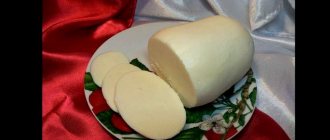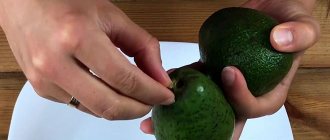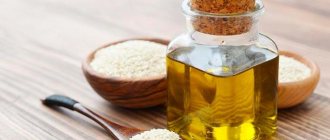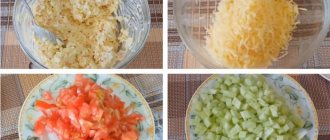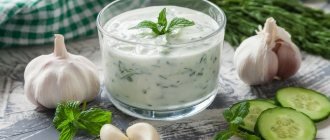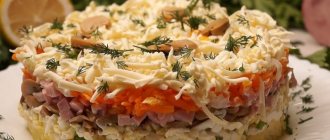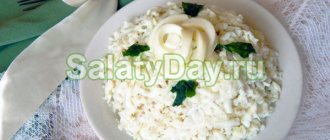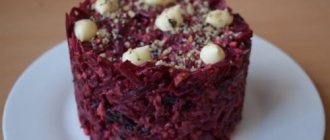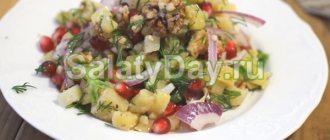- October 6, 2018
- Seasonings
- Natalie M
Unfortunately, those aromatic herbs that come to our table in the warm season directly from the garden are not available in winter. Parsley and dill, as well as some other herbs, can be bought in winter, but not all of them. It is for this reason that many housewives have learned to prepare various spicy herbs, freeze or dry them, can them and salt them. In addition, various alcohol tinctures, as well as vegetable aromatic oil, are made from fragrant herbs.
If you add just one tablespoon of this oil to salads, stews, fish, meat and even baked goods, the dish will have a fresh summer aroma, and the taste will become more piquant and rich. Speaking about how to make aromatic oil at home, it is worth noting that this entire process involves following several steps. First of all, you need to choose the right container for infusion. After this, you need to decide on the main type of oil. Next, choose the ingredients on which the aromatic oil will be infused.
You can study the manufacturing process of this product in more detail below.
Selection of cookware
To prepare aromatic oil, you need to choose a container with a wide neck. This is necessary so that pieces of fruits and vegetables, as well as herb shoots, can easily pass inside. The ideal option for preparing aromatic oil would be a glass bottle with a fairly wide neck and a screw cap. If you don’t have such a capacity, then don’t be upset. You can also prepare aromatic oil in a simple glass jar. When the product is ready, you just need to pour it into a more beautiful container.
What is oil maceration?
Maceration (from Latin macero - soften, soak, soak) is a method of obtaining healing substances, beautiful color and pleasant aroma from plants by infusing them in a liquid solvent. The maceration method consists of enriching the liquid substrate with the beneficial properties of the plant. As an infusion, you can use natural vegetable oil, water with glycerin, or alcohol with water. We recommend using cold-pressed oil without additives, prepared in a home oil press from proven raw materials. Mandatory conditions are that the oil is resistant to heat and sunlight, as well as not having a strong odor, since some oils can overpower the aroma of the plant.
| Infusion can take from 1 hour to 3 weeks depending on the maceration method. There are 2 methods of preparing aromatic oil by maceration:
|
Selection of raw materials
As for the raw materials for the manufacture of this product, they can be completely different. Flavored oil for salad at home (as well as for other dishes) can be made from the following ingredients:
- Spices: cinnamon, cloves, black allspice, cardamom.
- Herbs: rosemary, basil, parsley, dill, cilantro, oregano, thyme, tarragon, mint, fennel.
- Vegetables: hot peppers, garlic, celery, horseradish, paprika.
- Fruits: lemon, orange, tangerine, as well as the zest of any citrus fruits.
- Dried berries and mushrooms.
All of these above ingredients can be used either together or separately, depending on your taste. Infusing aromatic oil at home, for salads and other dishes, is a very unusual and exciting activity. By changing the amount of ingredients, as well as the entire composition, you can get a very unusual taste and aroma of the finished product.
Ways to scent your home with essential oils
Wet cleaning
How to deliciously prepare carp caviar at home
To ensure that a pleasant and fresh smell remains in the room after wet cleaning, add a solution of vinegar and drops of essential oil to your taste in a bucket of warm water: fir, orange, thyme, cinnamon, lavender, lemon balm, sage and others. Based on the proportion: 20 drops of ether per 200 grams of vinegar. They can be combined to create a subtle and individual scent.
To clean furniture, mix jojoba oil and alcohol in a one-to-one ratio, and then add 20 drops of essential oil for every 50 grams of this mixture.
Hallway
The first impression of a house is formed in the corridor, when a person enters and smells it. To create a pleasant atmosphere and hide the “miscellaneous” smell of shoes and clothes, add 1-4 drops of essential oil of fir, pine, bergamot, cypress, orange, lemon or lavender to filter paper.
Living room
People spend most of their time in this room, so the aroma and cleanliness of the air is extremely important here. Essential oils of geranium, spruce, fir, tea tree and herbs will help wash away dust and create an atmosphere. Essential oils of sandalwood, rose, lemon, tangerine, grapefruit or cinnamon are ideal for relaxation after a hard day at work.
To create an atmosphere, pour some water into a spray bottle and add five drops of essential oils that have already been dissolved in alcohol. Then simply spray the composition in the room. If you don’t want to spray it, you can lay out napkins soaked in the mixture, the effect will be the same.
Bedroom
To relax in the bedroom, you can use the same set as for the living room. However, you can use aphrodisiacs that will set you up for a romantic wave and give you a high sensual perception. To increase male potency, essential oils of basil, jasmine, mint, rose and cinnamon are suitable. To excite a woman - ylang-ylang, jasmine, rose, patchouli and cardamom oils.
At the same time, ylang-ylang essential oil is considered universal; it increases the desire of both men and women.
To get the desired result, apply a couple of drops of oils to your sheets and pillowcase. For such cases, sachets filled with a selection of aromatic herbs and flowers are very convenient.
Study
To stay focused on your work, it is recommended to clean your office regularly. A mixture of water and a mixture of vinegar and lavender or lemon ether will ensure the cleanliness of the floors. The same mixture is suitable for wiping furniture.
To focus and reduce fatigue, place a napkin with three drops of lemongrass, ginger, jasmine or rosemary oil on your desk.
Kitchen
The kitchen is a place that is saturated with the smells of food, especially when frying meat and cooking various broths. Essential oils of lemon, mint, orange, cedar, rosemary, cinnamon and pine will help cope with the obsessive odor. These oils can be combined to keep your room smelling nice.
To create the product, take 200 ml of alcohol and dissolve 20 drops of essential oil in it, and then add a little warm water to the resulting mixture. Wipe all surfaces with the resulting solution; you can also use it on cutlery and dishes.
Odors in the refrigerator are easily eliminated using a mixture of lemon ether and soda.
Bathroom and toilet
These rooms need wet cleaning at least once a week, this is necessary for disinfection. To do this, make the following solution: per liter of water, add a mixture of 15 ml of alcohol and 5 drops of essential oils of lemon, rosemary, clove, cinnamon, pine, mint, lavender or other “fresh” aromas.
Clean ceramic surfaces with a sponge with a special cleaner and a couple of drops of lemon or tea tree essential oil - this will help deal with mold and plaque. To permanently disinfect the toilet, place a special tablet or bomb in the flush tank.
Insect control
Essential oils of clove, lavender and geranium are perfect for getting rid of insects in your apartment. It is enough to add 3 drops to the aroma lamp or on a napkin, and you can forget about midges and mosquitoes.
If there are ants in your house, a solution of mint and lavender essential oils will help you deal with them. Take 250 ml of alcohol, add 5 drops of mint and lavender ether to it, and dilute with water to make 500 ml of solution. Pour the mixture into a spray bottle, and then spray the areas where ants appear every day for a week.
To repel flies and cockroaches, try cedarwood essential oil. Also effective are hops, St. John's wort, eucalyptus and bird cherry. Mix with alcohol and water in the same proportions as indicated above, spray from a spray bottle or add to a floor cleaning solution.
Manufacturing secrets
To prepare aromatic oil for salads and meat dishes correctly, you should not only follow the recipe and preparation technology, but also take into account some important nuances, which are as follows:
- If you are infusing oil with herbs, then it is best to opt for fresh herbs, as they give the product the most intense aroma, which cannot be said about dried herbs.
- Before putting herbs into a container, you need to mash them a little in your hands.
- You can use whole herbs, or chop them with a knife first.
- As for citrus zest, it should be placed in a container in large pieces, but crushed pieces can also be used.
The main rule that must be strictly observed when preparing aromatic oil at home is that the raw materials must be dry. If you wash them before adding vegetables and fruits to the oil, then after this procedure they must be dried. You should not neglect this rule, since water that gets into the container with oil can nullify all your efforts.
So, we have sorted out the raw materials and containers for infusing the oil. And now it’s worth moving on to the main manufacturing secrets. But how to make flavorful oil for salad and meat?
Receipt methods
Finding an answer to the question of how to make essential oil at home should begin with choosing a production method. The number of options offered is small, so there are no particular problems with the definition. For those who are not ready to spend additional time and money, the simplest method is suitable, during which plant raw materials are combined with hot vegetable oil and infused for some time under certain temperature and light conditions. The resulting product bears little resemblance to real essential oil, but can be used for medicinal and cosmetic purposes. You can also infuse the raw materials with alcohol, filtering the final product after the process is completed.
Distillation
To obtain an aromatic product using this method, you will need a special apparatus very similar to the well-known device for moonshine, knowledge of technology, raw materials and strict adherence to temperature conditions, since exceeding the temperature entails a significant decrease in the quality of the oil.
The distillation method involves the use of pre-dried or fresh (flowers) raw materials placed in boiling water or placed over steam. Once released, the oil mixed with water is directed to the filter, where it is separated from the liquid. The water is not poured out, but used as flavoring for household purposes.
Distillation method:
https://www.youtube.com/watch?v=iHJF8usbvTY
Enfleurage
The method involves applying animal fat or beeswax to glass plates. Vegetable raw materials are laid out on the resulting wax or fat layer. The design is completed by another glass plate and a weight pressing it. This entire composition is left untouched for several days, during which the fat layer is saturated with oils. Once the process is complete, the glass plate is freed from the mixture of fat and oil. Next, the mixture is heated or diluted in alcohol. The resulting essential oil is collected and used as a base for the manufacture of cosmetics.
Spin
The squeeze method is ideal for working with citrus fruits. In industry, oils are separated from fruit peels using centrifuges. At home, you can use the old squeezing method. This option is considered the most environmentally friendly and safe for health.
Cooking methods
To answer this question, it is necessary to take into account that there are several ways to prepare this product. They will depend on the recipe chosen, as well as the raw materials used. If you follow all the cooking methods described below, you can get the most aromatic oil, which will become simply indispensable in preparing various dishes.
First way
This method is suitable for flavoring oil with the help of various herbs or herbal mixtures. It is as follows:
- Vegetable oil must be heated over low heat, but not brought to a boil. The temperature of the liquid should be about 85 degrees.
- Herbal mixtures or individual herbs must be placed in oil, the liquid allowed to cool, after which it is poured into pre-prepared bottles.
- The oil should infuse for 2-3 weeks, the time will depend on how rich you want the aroma and taste of the product to be.
- When the oil is infused, it must be strained through gauze.
- The finished product can be stored in a cool, dark room for 6 months.
Classifications
Classification of essential oils.
By naturalness
The composition of essential oils depends on the method of production.
- Natural essential oil – has a natural composition, rich aroma, and provides maximum therapeutic benefits.
- Reconstructed (restored) - obtained by mixing natural and synthetic components that recreate the composition of natural oil.
- Synthetic - produced by chemical synthesis, the aroma is identical to natural, but it is a chemical product.
- Falsified - produced by mixing a fragrance with a solvent, emitting the original. Not healthy
!
By impact on humans
Essential oils types of effects on humans:
- tonic, stimulating, stimulating;
- calming, relaxing, harmonizing;
- refreshing, cleansing, strengthening.
These properties of oils are used as tools in aromatherapy.
According to fragrance notes
The aroma note is a conditional indicator of the volatility of the aroma of the oil and the rate of its evaporation.
- Top notes are strong first aromas of the aroma; they disappear in 1–2 hours (mint, eucalyptus).
- Middle notes are the main notes of the aroma, evaporate after 2-4 hours (pine, lavender).
- Bottom notes are a trail of fragrance, resistant to evaporation and last up to 24 hours (sandalwood, incense, vanilla).
The shelf life of essential oils is up to 5 years (rose, sandalwood, myrrh, jasmine, patchouli, verbena, incense). But citrus and coniferous oils require careful storage and use after opening the bottle for 0.5 - 1 year.
The expiration date on the package refers to an unopened bottle. When the bottle is opened and the oil comes into contact with air, the oxidation process begins and the service life is reduced.
How to store essential oils so that they retain their beneficial properties:
- tightly closed dark bottle;
- temperature from –5 to +30 degrees Celsius;
- away from fire and children.
If the oil becomes cloudy, thickened, or smells unpleasant, it means it is spoiled. You shouldn't use it.
If we carefully study the information about the properties of essential oils, the generous and wise world of nature opens up to us. Having learned to interact with it competently, we will gain access to the world of harmony of the universe. Now you know what essential oil means.
Second way
This method is ideal for flavoring oils using ground spices. To prepare aromatic oil using this method, you must follow some rules, which are as follows:
- Before adding oil, spices must be thoroughly ground in a coffee grinder.
- After this, they are transferred to a dry, clean container and filled with any vegetable oil on top, the temperature of which should be at room temperature.
- The oil should be infused for 5-10 days. When the spices settle and the liquid becomes completely transparent, this means the product is ready.
- The finished oil, which has been infused using this method, should be used within a couple of months after its preparation.
Seasoning recipes for any dish
Universal seasoning: recipe
How to prepare pink salmon milk (16 recipes on how to prepare it quickly and tasty)
Good for soups, casseroles, salads, fish and meat. Combine dill, parsley, green and onions, carrots, ground black pepper, salt.
Seasoning for pork: recipe
Parsley and dill, carrots, rosemary, coriander seeds (give the meat a sweet taste), ground paprika, ground black pepper, salt.
Chicken seasoning: recipe
Garlic, oregano, thyme, rosemary, paprika, turmeric, mustard seeds, ginger, pepper mixture, dill.
Before cooking the chicken, pour the seasoning into a small container, add vegetable oil, then generously grease the carcass with the prepared mixture.
Seasoning for stewed and fried potatoes: recipe
Ground paprika and black pepper, thyme, turmeric, cilantro, dill, onions.
Ground sweet paprika and black pepper, parsley, green onions, dill, garlic, salt.
When boiling potatoes, I recommend adding a couple of bay leaves and a clove of garlic to the pan - the dish will become more aromatic and piquant.
Third way
This method is used to flavor oils that use vegetables and fruits in the recipe. The method is as follows:
- Fruits or vegetables must be washed thoroughly and then wiped dry with a cotton towel.
- Using a blender, grind all ingredients until pureed.
- Cook over low heat: bring the puree to a boil, add vegetable oil, mix everything well and pour into a container for infusion.
- The oil should infuse for about 3-5 weeks.
- Use the finished product as is, or you can also strain it through a piece of gauze folded in several layers.
- The finished product is stored for approximately 6 months.
Use of aroma oils
As mentioned earlier, flavored oils are used in soups, salads, meats, dressings, fish, vegetables and more. Below you can find classic recommendations that will help you navigate the use of a flavored product:
- Oil with the addition of basil will go perfectly with dishes made from vegetables and fish.
- Cooks use clove and cinnamon oil to make sweet pastries.
- Oil with the addition of rosemary is most often used for meat dishes, as well as rice.
- Thyme aromatic oil enhances the taste of vegetable pies and pizza.
- Oil with lemon zest, as well as lemon, can perfectly complement the taste of fish dishes.
- Caraway oil goes well with vegetable dishes.
- Aromatic oil with the addition of coriander complements the taste of vegetables and savory pastries.
Now you should take a closer look at the most popular recipes for making flavored oils at home.
Design Features
Producing vegetable oil at home using a purchased or self-made press has a number of features that must be taken into account.
- When producing oil at home, the finished product has a two-year shelf life. A home press can be purchased in a serial version or made by yourself.
- Using a household squeeze press, you can extract oil from sunflower seeds, olives and even nuts.
- One of the simplest and most cost-effective ways to make a device for extracting oil is to remake a serial household press designed for squeezing juice from grapes and apples. In such equipment there is no need to change working attachments - it is enough to replace the holder with a device of higher power. This modernization will allow the unit to be used not only for processing olives, but also for squeezing oil from sunflower seeds.
- A home oil press, the basis of which is a worm screw responsible for pressing, can be made using improvised means. When designing such a press, keep in mind that the pressure it will be able to develop will depend on both the diameter of the worm nut and the power of the beam risers. To provide the created device with higher reliability, the beam that serves as the basis of its structure should be made more powerful. These requirements are fully met by a wooden oil press, the mechanism elements of which are made of solid oak. A budget alternative to such a unit is a press, the structural elements of which are made of metal.
- A household press (like any other) used for squeezing oil requires a cylinder without a bottom in its design, which can be used as an ordinary metal barrel. To increase the rigidity of such a cylinder in its lower part, you can take a metal hoop. If a wooden barrel is used as a cylinder, the material from which it is made must be dry and highly hard. The ideal material in this case would be solid oak.
- Important design elements that an oil press should be equipped with include the peeling rollers, which are a pair of replaceable rollers. Their rotation is ensured by gears mounted on the metal racks of the device. On the racks, in addition to the gears, the upper and lower buckets are fixed, as well as a handle, which ensures the rotation of the mechanism elements, or a toggle bucket. Peeling rollers are usually made of wood, and their working surface is lined with a float cloth.
Diagram of a press with a worm screw
Homemade screw press for squeezing oil or juice
With cloves and cinnamon
To prepare this oil you will need:
- 450 ml olive oil.
- 3 cinnamon sticks.
- 5 pieces of carnations.
Cloves and cinnamon must be ground in a coffee grinder. The container for infusing aromatic oil should be thoroughly washed and then dried. A mixture of crushed cloves and cinnamon is poured into a clean and dry container, and vegetable oil is poured on top, the temperature of which should be at room temperature. The product should be infused for 1 week. When the oil is ready, it can be used to prepare various sweet pastries.
Spicy olive oil
To prepare you will need:
- Olive oil – 100 ml.
- Black pepper (peas) – 3 pcs.
- Allspice (peas) – 3 pcs.
- Anise (grains) – 1/4 teaspoon.
- Nutmeg (ground) - on the tip of a knife.
- Cinnamon (ground) - on the tip of a knife.
Recipe:
- Pepper (black and allspice) and anise are ground using a coffee grinder.
- The crushed spices are mixed with cinnamon, nutmeg and transferred to a clean, dry container.
- Add olive oil at room temperature
- Leave for 8-10 days.
- Store the oil in a tightly closed container at room temperature.
With mint
To prepare olive oil with mint you will need:
- 450 ml oil.
- Allspice in the amount of 3 peas.
- 4 sprigs of mint.
The mint should be sorted, washed thoroughly and dried. After this, the plants must be transferred to a dry, clean container, add allspice and pour in olive oil, which is preheated until hot. In this case, the herbs and spices should be completely covered with oil. The product is infused for about 1 month. After this, the oil must be filtered and stored in the refrigerator.
With fragrant herbs
Olive oil is also used as the basis for this product. To prepare you will need:
- 450 ml oil.
- 3 pieces of marjoram leaves.
- 5 pieces of salvia leaves.
- 1 sprig of rosemary.
- 1 sprig of thyme.
- 2 bay leaves.
All herbs must be thoroughly washed and placed on a towel to dry. Place leaves of marjoram, salvia, thyme, rosemary, and laurel in a dry and clean container. Heat the olive oil over low heat, but do not bring it to a boil. Pour the liquid over the herbs until it covers them completely. You can also put the greens in heated oil, let it cool, and then pour everything together into a dry, clean container. The aromatic oil should infuse for about 3 weeks. After this, the product must be filtered and stored in a cool, dark room. If this is not available, then the oil can be stored in the refrigerator.
With garlic
To prepare this aromatic oil, vegetable oil, rather than olive oil, is used. For this you will need:
- 450 ml refined sunflower oil.
- 5 cloves of garlic.
- 1 sprig of marjoram.
- 1 sprig of basil.
Garlic should be peeled, washed, mashed in a mortar or crushed using a garlic press. Wash the marjoram and basil and let dry. Add chopped garlic, marjoram and basil to a container with heated vegetable oil. When the oil has cooled, it, along with other ingredients, must be poured into a dry, clean container. The mixture should infuse for about 3 weeks, and then it is filtered and stored in a cool, dark place.
Please note that instead of marjoram and basil, you can use rosemary in this recipe.
Very tasty and aromatic dressing for cabbage salad
This dressing is prepared very quickly and simply, and it turns out so tasty that you will not want to dress the salad even with the best vegetable oil. Very aromatic, bright - it will highlight the taste of your salad.
This dressing is ideal for coleslaw, but is also great for any vegetable appetizer. You can use a mixer to mix the ingredients, but you can also do it manually with a fork or whisk.
You will need:
- vegetable oil – 50 ml;
- vinegar 9% – 15 ml;
- dill – 30 gr.;
- sugar – 2 tsp;
- salt – 1 tsp;
- mustard – 1 tsp;
- ground black pepper – ½ tsp;
- garlic – 3 cloves.
Cooking stages.
Add salt, sugar and ground black pepper to the bowl where you will make the sauce.
Then add mustard and pour in vinegar and vegetable oil.
After this, squeeze the peeled garlic through a press and mix everything thoroughly with a mixer.
Chop the washed dill as finely as possible. Send to the rest of the dressing ingredients.
Stir everything well.
With lemon
Olive oil is used as the base for this flavored product. To prepare it, you need to take:
- 600 ml olive oil.
- 9 pieces of carnations.
- 3 small lemons.
Citrus fruits must be washed well and wiped dry. Stick 3 cloves into each fruit. Wash the container for infusing aromatic oil thoroughly, sterilize and dry. After this, you need to put lemons in it and pour in heated olive oil. The product should be infused for 3 weeks. When it is ready, the lemons need to be removed from the container. Store the finished flavored oil in a cool and dark place. Instead of whole lemons, you can also use their zest to prepare the product.
Not all recipes for preparing vegetable aromatic oil were listed above. In fact, there are a huge number of them. Therefore, you can safely experiment by adding different ingredients to recipes to be surprised by a new, unexpected taste.
If you decorate a bottle of flavored oil beautifully, it will become a good gift for friends and family who will definitely appreciate this product.
